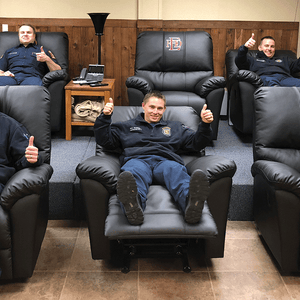Every area of the modern fire station has a purpose, and the chairs that firefighters take a seat on are no exception. A cushty and reliable chair is a significant the main station experience, one that could make long shifts more bearable. But did you understand that fire station chairs have a fascinating history? This information will take a peek back at the evolution of firehouse chairs, from simple wooden stools to advanced ergonomic models.

The earliest fire stations didn't have chairs at all. Instead, firefighters would take a seat on wooden benches or stools when they'd a moment to rest. These chairs were simple and functional, nevertheless they weren't always comfortable. As fire departments began to develop in size and complexity, firefighters spent additional time at the station and needed more comfortable seating options.
By the late 19th century, fire station chairs began to take on a more specialized design. Wooden chairs with high backs and armrests were introduced, providing more support and padding. These chairs were typically made in-house by the firefighters themselves using local carpentry skills.
In early 20th century, fire station chairs started to embrace new materials and design elements. Steel frames replaced wooden ones, and many chairs was included with adjustable height options. The look of those chairs focused on durability and ease of use, rather than comfort or ergonomics.
In the 1970s and 1980s, ergonomic design became a typical feature in several regions of life, and fire station chairs were no exception. Chairs began to feature lumbar support, adjustable armrests, and breathable mesh fabrics. These chairs were designed to stop back pain and other ergonomic issues related to sitting for long periods of time.
Recently, fire station chairs have continued to evolve. Advanced ergonomic features are actually the norm, and chairs are created to be even stronger and practical. Some chairs even feature built-in technology like charging ports and tablet holders.

Conclusion:
The evolution of fire station chairs is a testament to the significance of comfort and ergonomics in today's firefighting industry. From simple wooden stools to advanced ergonomic models, the chairs firefighters take a seat on attended a long way on the years. As firefighting continues to be advanced and complex, we are able to expect you'll see even more innovations in fire station chairs which make the lives of firefighters easier and more comfortable. No real matter what the future holds, one thing is for certain: fire station chairs will continue to evolve and improve as the needs of firefighters change.
